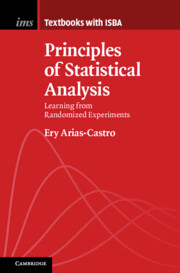Refine search
Actions for selected content:
2327 results in Pattern Recognition and Machine Learning
18 - Timely Wireless Edge Inference
- from Part II - Wireless Networks for Machine Learning
-
- Book:
- Machine Learning and Wireless Communications
- Published online:
- 16 June 2022
- Print publication:
- 04 August 2022, pp 512-538
-
- Chapter
- Export citation
Index
-
- Book:
- Machine Learning and Wireless Communications
- Published online:
- 16 June 2022
- Print publication:
- 04 August 2022, pp 539-544
-
- Chapter
- Export citation
13 - Optimized Federated Learning in Wireless Networks with Constrained Resources
- from Part II - Wireless Networks for Machine Learning
-
- Book:
- Machine Learning and Wireless Communications
- Published online:
- 16 June 2022
- Print publication:
- 04 August 2022, pp 385-408
-
- Chapter
- Export citation
Contents
-
- Book:
- Machine Learning and Wireless Communications
- Published online:
- 16 June 2022
- Print publication:
- 04 August 2022, pp vii-viii
-
- Chapter
- Export citation
14 - Quantized Federated Learning
- from Part II - Wireless Networks for Machine Learning
-
- Book:
- Machine Learning and Wireless Communications
- Published online:
- 16 June 2022
- Print publication:
- 04 August 2022, pp 409-433
-
- Chapter
- Export citation
10 - Data-Driven Wireless Networks: Scalability and Uncertainty
- from Part I - Machine Learning for Wireless Networks
-
- Book:
- Machine Learning and Wireless Communications
- Published online:
- 16 June 2022
- Print publication:
- 04 August 2022, pp 285-316
-
- Chapter
- Export citation
Part I - Machine Learning for Wireless Networks
-
- Book:
- Machine Learning and Wireless Communications
- Published online:
- 16 June 2022
- Print publication:
- 04 August 2022, pp 21-22
-
- Chapter
- Export citation
Frontmatter
-
- Book:
- Machine Learning and Wireless Communications
- Published online:
- 16 June 2022
- Print publication:
- 04 August 2022, pp i-iv
-
- Chapter
- Export citation
17 - Differentially Private Wireless Federated Learning
- from Part II - Wireless Networks for Machine Learning
-
- Book:
- Machine Learning and Wireless Communications
- Published online:
- 16 June 2022
- Print publication:
- 04 August 2022, pp 486-511
-
- Chapter
- Export citation
Preface
-
- Book:
- Machine Learning and Wireless Communications
- Published online:
- 16 June 2022
- Print publication:
- 04 August 2022, pp xiii-xiv
-
- Chapter
- Export citation
Contributors
-
- Book:
- Machine Learning and Wireless Communications
- Published online:
- 16 June 2022
- Print publication:
- 04 August 2022, pp ix-xii
-
- Chapter
- Export citation
3 - Neural Network Coding
- from Part I - Machine Learning for Wireless Networks
-
- Book:
- Machine Learning and Wireless Communications
- Published online:
- 16 June 2022
- Print publication:
- 04 August 2022, pp 55-76
-
- Chapter
- Export citation
1 - Machine Learning and Communications: An Introduction
-
- Book:
- Machine Learning and Wireless Communications
- Published online:
- 16 June 2022
- Print publication:
- 04 August 2022, pp 1-20
-
- Chapter
- Export citation

Principles of Statistical Analysis
- Learning from Randomized Experiments
-
- Published online:
- 22 July 2022
- Print publication:
- 25 August 2022
7 - Community Detection on Graphs
-
- Book:
- Random Matrix Methods for Machine Learning
- Published online:
- 30 June 2022
- Print publication:
- 21 July 2022, pp 337-363
-
- Chapter
- Export citation
5 - Large Neural Networks
-
- Book:
- Random Matrix Methods for Machine Learning
- Published online:
- 30 June 2022
- Print publication:
- 21 July 2022, pp 277-312
-
- Chapter
- Export citation
3 - Statistical Inference in Linear Models
-
- Book:
- Random Matrix Methods for Machine Learning
- Published online:
- 30 June 2022
- Print publication:
- 21 July 2022, pp 155-206
-
- Chapter
- Export citation
Frontmatter
-
- Book:
- Random Matrix Methods for Machine Learning
- Published online:
- 30 June 2022
- Print publication:
- 21 July 2022, pp i-iv
-
- Chapter
- Export citation
Bibliography
-
- Book:
- Random Matrix Methods for Machine Learning
- Published online:
- 30 June 2022
- Print publication:
- 21 July 2022, pp 378-400
-
- Chapter
- Export citation
6 - Large-Dimensional Convex Optimization
-
- Book:
- Random Matrix Methods for Machine Learning
- Published online:
- 30 June 2022
- Print publication:
- 21 July 2022, pp 313-336
-
- Chapter
- Export citation
